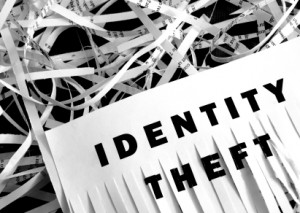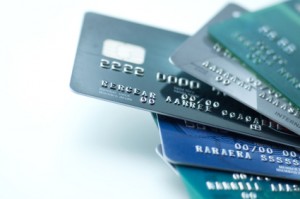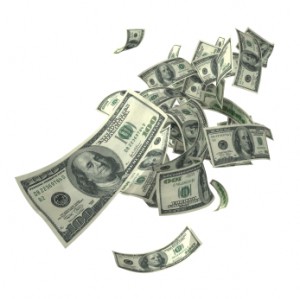June 19th, 2010

When tax escrows are set up based on the value of the unimproved lot, new home buyers are in for a nasty surprise when the actual taxes are based upon the value of the lot with the new home. I needed to bring this subject to light again. I recently received another call from a lady who wanted to take legal action against a new home builder. The issue was in regards to her escrow shortage. Don’t get me wrong I am not saying all builders are the bad guy. I agree ultimately the homeowner is responsible for what ever type of loan they get. There is however issues with how the builders mortgage company set up tax escrows. Tax escrow shortages have contributed too many foreclosures across the country. I don’t have actual numbers but I would be willing to bet new home construction foreclosures are higher than existing homes. Here is what you need to know to protect yourself.
Escrow shortages- this happens when the builder’s mortgage company collects taxes based on un-improved property taxes. Let’s assume you paid $300,000 for your new home and the taxes on that home are based on $30,000. This is an example of how taxes would be on recorded for that particular property. The mortgage company would collect a tax escrow based on the un-improved value of $30,000. This is where your escrow shortage takes place and causes issues down the road. The correct way to set up your escrows on a new home is for the mortgage company to collect the taxes based on the percentage rate in your city. So if taxes are roughly 2.5%, then the builder would collect taxes on 2.5% of $300,000. Unfortunately this typically is not being done with builders.
This issue results in your payment going up once your current mortgage company realizes you have a tax escrow shortage. Your option when this happens is to pay the shortage, refinance or have your payment increase to cover the shortage. Typically your payment will increase around $200 to $400 dollars. This type of increase normally results in unnecessary foreclosures
Escrow shortages can be avoided with better regulation within the builder and mortgage community. A disclosure is provided by mortgage companies at closing stating they are collecting un-improved property taxes. During this entire process most home buyers are not clear on this issue and just sign this disclosure. Just like any other industry with better regulation and accountability most of this could be avoided.
Make sure you avoid this issue if you are about to buy a new construction home. This particular escrow issue has caused unnecessary problems due to a lack of proper explanation to the buyer. During the home buying process make sure taxes are set up correctly if you buy a new construction home. Don’t allow the mortgage company to set up your escrow based on un-improved taxes.
A escrow shortage will result in a foreclosure that stays on your credit report for 7 years. Buyer beware…….
Author: Mike Clover
CreditScoreQuick.com
Posted in Uncategorized | Comments Off
June 18th, 2010

This morning a good friend called to tell me about a problem they’re facing. They’re retired folks and she had told me before that since her husband has nothing better to do with his time, he checks their bank accounts daily.
He doesn’t like computers, so he calls the automated number to check their balances and see if checks they’ve written have come through. To put it in her words, “He drives me nuts with this constant checking.”
Well, yesterday she was glad that he has this compulsion.
When he checked in yesterday, he found that their checking account balance was $2!
He also found 4 different debit transactions that didn’t belong to them. They live in Idaho, and the transactions were at Home Depot and WalMart – in North Dakota! They were obviously not done at the check-out counter, because 3 of the $300+ transactions were posted within about a 2 minute time frame. So, this is being done electronically.
The interesting thing is that the first charge, for only $10, was done a few days earlier – and in spite of his checking, he missed it. We can assume that it was a “test” debit to see if the charge would be accepted.
They immediately went to the bank and were assured that these debits had not yet been approved and would not be. But she was dismayed when they checked again today and they’re still showing.
She had called and the person she spoke with said “Oh, I guess we didn’t get that taken care of yesterday…” When we hung up they were on their way back to the bank.
But that’s not all they need to do. I sent her the link to our “What to do” post and urged her to take the steps outlined there.
Meanwhile, they’ve written and mailed checks against their (true) balance and are worried about overdraft fees if those checks come in before the bogus debits are removed. Or worse – what if the bank decides to bounce the checks?
The bank says “Don’t worry” but they’re worried. After all, they didn’t post an alert about the theft and deny those charges yesterday as promised, so…?
We can’t tell you a way to prevent this kind of scenario – aside from not using credit or debit cards. And even then, if you’ve ever had a home loan or visited a doctor’s office, or done anything that required revealing your Social Security number, you’re at risk.
Smart crooks have found ways to access records – and even figure out your PIN numbers.
Credit monitoring services such as those we offer here will let you know if a thief is accessing your credit report or trying to set up new accounts in your name. They’ll let you know of changes to your file – such as a change of address attached to a dormant account that is now in use.
But to be absolutely safe, you do need to check your bank accounts and credit cards regularly. Actually read every statement you receive, and access those accounts on line a time or two between statements.
The sooner you put the brakes on an identity thief, the less trouble you’ll have.
Author: Marte
CreditScoreQuick.com
Posted in Uncategorized | Comments Off
June 17th, 2010

Q:
Does the credit score that the bank receives and the one that you can get directly from Equifax differ?
How fast can your score go up?
Would it be unlikely to go up 60 points in less than two weeks?
Summer….
A:
Hi Summer I will be glad to answer your questions. The credit score the banks use is typically the FICO score, and the credit score you get with Equifax is FICO as well. This is the only credit bureau that provides the FICO credit score to consumers. So the credit score with the bank should be about the same if you pulled your credit score with Equifax at our site. In regards to increasing your credit score 60 points within 60 days, I personally have not seen that done yet with anyone that I have helped. I have however seen credit scores increase 20 points or so in a few weeks. In order to get credit scores up 60 points, could take a longer. It really depends on what your credit report looks like and what actions you took to get your score up. Everyone’s situation is different. Check out my article on increasing your credit scores……..
Mike Clover
CreditScoreQuick.com
Posted in Uncategorized | Comments Off
June 16th, 2010

When the Credit CARD Act of 2009 was passed it gave credit card issuers plenty of time to implement the changes. A few minor changes went into effect last year, then many more this past February. Now the final rule limiting unreasonable fees is set to go into effect on August 22.
One change that may affect you immediately is the provision which not only requires your credit card company to give you a valid reason why before they increase your interest rate, but demands that they re-evaluate any rate increases made since January 1 of 2009.
Under the present rules, they don’t need a reason other than “I want to.” Now the reason must be tied to your use.
Taking it one step further – if they do increase your rate “for cause,” they must re-evaluate that increase every 6 months and reduce it if the reasons for the increase have changed, making you a better risk.
Another sweeping change involves late fees. Right now, your credit card issuer can charge you a $39 late payment penalty, even if your total balance is less than $39.
Under the new rules, that penalty cannot exceed $25 unless this is your second (or more) late payment within the past 6 months. And, even better for consumers carrying small balances, the late fee cannot exceed the minimum payment for that month. So if your minimum payment was $18, the late fee cannot exceed $18.
This rule does have a built-in “out” for the credit card issuers, however. They can charge more if they can demonstrate that the costs they incur as a result of late payments justify a higher fee.
One change that could have an adverse effect on consumers is the outright ban on inactivity fees.
Prior to the CARD Act, credit card issuers could charge a fee just to keep your card actively on their books awaiting your future use.
Now that they will not be allowed to charge an inactivity fee, many card issuers are turning to an annual fee that will be charged to all card holders across the board. However, in researching various cards, we see that some issuers are promising a refund of that fee if annual usage exceeds a set dollar amount or number of transactions.
Check your cardholder agreement to see if that applies to you.
Checking will soon become easier, because the new rules specify that all cardholder agreements be posted on line – so that consumers considering a new card can see the details before they sign on.
It also allows current cardholders to see the effects of any activity they might be considering… such as using the card for overseas transactions.
Author: Marte
CreditScoreQuick.com
Posted in Uncategorized | Comments Off
June 16th, 2010

I have been a lender for many years and I have always told everyone that buying a home is better than renting. I still agree with this because I have rented and now own. Now when it comes to being a bad investment, I don’t think most realize what I am about to discuss. I was visiting with a gentleman whom at the time was not my stock broker but my friend was using him for money management. I was in his office and he did an analogy of how a home is a bad investment. Here is what he said…… You buy a home usually for what the house is worth. The average interest rate is 6%. If you are lucky the value of your home will increase by 3% every year. You pay taxes and insurance on the home and inflation is typically 3% per year. So if you take in account the cost to maintain a home, inflation at the rate of 3% you have a bad investment. Why, because if you do the math you are in the red. This is the case with most home owners. So you are probably scratching your head asking when a home could possible be a good investment? Well here is an example of how a home might be a good investment. You meet with a realtor and start looking for a home. You mention to the realtor that you are looking for a home with at least 20% equity in the home or you have no interest in buying the home. In this case your purchase could be a good real estate investment. Make sure you take into account declining real estate markets. This is going on everywhere. So if you find a home and get an accepted contract on that home for at least 20% less of its appraised value you could have a good investment. In most instances this is hard to find or is very competitive.
I don’t want to kill the American dream, but buying a home can be a bad investment after you take in account inflation, taxes, home owners insurance, loan interest rate, and the cost of home maintenance. I personally would rather own, but make sure you are clear on the factors discussed in this article before buying or you could end up with a money pit.
Author: Mike Clover
CreditScoreQuick.com
Posted in Uncategorized | Comments Off
June 14th, 2010

Since credit scores are based on the way a consumer uses his or her credit, being thrifty and not going into debt can be a hindrance when credit is needed.
If you’re facing this problem, you aren’t alone. FICO estimates that approximately 25% of the US adult population lacks enough credit data to generate a traditional credit score.
Credit accounts that are closed because they’ve been paid in full drop off your credit report 10 years from the date the account was closed. A closed account with negative information is deleted 7 years after the last delinquency. So if you haven’t used credit since 1999, you could find it difficult to get a new loan today. The credit bureaus simply don’t have anything to report about you.
Before underwriting became computer-driven, mortgage lenders could ask potential borrowers to bring in receipts for rent payments, utilities, insurance, etc. Underwriting was done manually, and the underwriter could take those payments into consideration.
Then manual underwriting went the way of the dinosaur and mortgage lenders advised would-be clients to get some credit from a source that reports to the credit bureaus and use it for a while before trying to buy a home.
That generally meant getting and using a credit card.
Lack of credit also hurts consumers buying cars – because without a credit score to offer proof of good money management skills, consumers are charged high interest rates.
The Good News: You can still get credit for good money management.
What most consumers don’t realize is that it is still possible to get credit – and higher credit scores – when you haven’t been using credit. The catch is that you have to find a lender who uses the FICO Expansion Score. Right now there are only about 500 lenders using this expanded service from FICO.
FICO is advertising it, however. So perhaps more will sign on in the future.
The FICO Expansion Score calculates your credit score based on whatever credit you do use, plus nontraditional credit information such as rent payments, utilities, phone bills, etc.
Interestingly, the Expansion Score appears to be a throw-back to the early days of credit reporting. According to the FICO website, credit risk is based on additional financial information such as checking accounts, property, and public records.
Back when credit bureaus were local businesses, employees not only checked public records, they checked local newspapers and recorded any negative information in consumers’ credit files.
Author: Marte
CreditScoreQuick.com
Posted in Uncategorized | Comments Off
June 12th, 2010
 If you have enough money – such as a net worth in the billion dollar neighborhood – you can qualify to carry an elite credit card, like the American Express Centurion credit card. If you have enough money – such as a net worth in the billion dollar neighborhood – you can qualify to carry an elite credit card, like the American Express Centurion credit card.
This credit card, casually known as “The Black Card,” comes with a $5,000 initiation fee, a $2,500 annual fee, and a requirement to charge at least $250,000 each year. The card itself is constructed of genuine titanium.
Pulling this card out to pay for a major purchase tells everyone within view that you are “Somebody.”
The web ad for this card carries the tagline: “Rarely seen, always recognized.” And it goes on to state: “Available by invitation only, The Centurion Card is the world’s rarest American Express Card and confers a level of service that can be extended only to selected individuals worldwide.”
So, is it the prestige or the service that entices the ultra-rich to pay $2,500 per year to carry this card? Access to the details about special perks given to cardholders is for “members only,” so I can’t answer that.
American Express has another option for the “not quite as elite.” Their platinum card, which is made of standard plastic and comes in basic silver/gray, comes with a much lower price – only $450 per year – and apparently has no pre-set spending requirements.
According to the advertising, both the Centurion Card and the Platinum card come with access to sporting events, fine dining, and visual and performing arts events that are not available to the general public at any price.
Another option to choose if your spending level isn’t quite high enough to qualify you for the American Express Centurion is the Visa Black. It’s far less pricey than the Centurion, but costs more than the American Express Platinum. This one comes with a $495 annual fee. Perhaps because this card is made of flexible carbon graphite. The Visa Black is available to only 1% of all U.S. residents.
For an annual fee of only $395, you can carry the Sotheby’s World Elite Mastercard. But only if you’ve been invited, and only if your investable assets top $2 million. Another requirement is an annual income of more than r $250,000. Along with the travel perks that come with other elite cards, Sotheby’s offers free admission to top museums and discounted prices on Sotheby’s catalogs.
If black just isn’t your color, and if you happen to have at least $1 million deposited in the Royal Bank of Scotland, you can opt for a beautiful purple card: The Coutts World Card.
Interestingly, most of the ultra-elite cards offer many of the same benefits – complimentary companion tickets on certain domestic or international air flights, global airport lounge access, and 24-hour concierge service. They also offer access to products, services, and events that are difficult to obtain. This includes sporting events, concerts, and such social events as an invitation to a VIP reception at the Playboy mansion.
Author: Mike Clover
CreditScoreQuick.com
Posted in Uncategorized | Comments Off
June 3rd, 2010
 You could say that the banks “threw the baby out with the bath water” when they cracked down on lending practices in answer to the mortgage meltdown. You could say that the banks “threw the baby out with the bath water” when they cracked down on lending practices in answer to the mortgage meltdown.
Self-employed business people suddenly found themselves unable to get home loans because they had no W-2’s to prove their income. And, since most business people do their best to lighten their tax burden, many didn’t have the tax forms to back up their income claims.
Now FHA is stepping in to bring back low down payment / low credit score loans to wage earners who may or may not be able to keep up with payments. But banks are still reluctant to offer loans to the self-employed.
If you’re self employed and know that you will want to buy a home or refinance a home in the future, you need to plan ahead. Here’s how:
First, pay more taxes. By that I mean stop taking every deduction possible, so that your taxable income will go up. And document every scrap of income. I know quick-stop operators who slip the “coffee money” into a can under the counter rather than the till. Other entrepreneurs “forget” to report cash payment for small jobs if the customer isn’t likely to file a 1090 form.
You already know that’s called tax evasion and it’s illegal. But it will also hurt your chances of a getting a mortgage. If you want a loan, you need to show all of your income.
Keep a close watch on your credit report and credit scores. Correct any errors and follow up on signs of identity theft immediately. Read the reports and pay attention to any notes about conditions affecting your scores. Then take steps to protect and raise those scores.
Next, be patient. Banks want to see stability, and they know that a huge percentage of small businesses fail in the first months. So if you’ve been in business for less than 18 months, the only real chance you stand is to have a strong co-signer. Running your business successfully for at least 2 years gives you the best odds of obtaining a loan.
Build your cash reserves. If the bank sees that you have 6 months worth of payments and operating expenses in the bank, they’ll feel much more secure in lending to you.
Beef up your record keeping. And before you go to an appointment, ask the mortgage lender what he or she will want to see – and take it with you.
Apply in person. First, make some calls and locate a mortgage broker who specializes in loans for the self-employed. Then sit down with them in person. Ask questions about different loan programs and help them help you by finding the right program to fit your specific situation. On-line lenders offer big things, but an automated application is not what you need when you’re self-employed.
Author: Mike Clover
CreditScoreQuick.com

Posted in Uncategorized | Comments Off
June 1st, 2010
 In my opinion, not much. In my opinion, not much.
Writing in the Washington Post, Michelle Singletary argues that all consumers should have annual access to both their credit report and their credit scores. She feels that Senator Mark Udall (D-Colo.), who proposed the Fair Access to Credit Scores Act of 2010, did not go far enough in his request.
Under his proposal, those who have been denied credit based on their credit scores will have free access to their report and their scores – without even asking. This will create a financial burden on the creditors who turned them down. In addition, it is another “something for nothing” program that our entitlement-minded society is fast becoming addicted to.
We have to wonder who should be responsible for paying the cost of compiling those credit scores, and for sending them to the consumers, if the consumers are to have them for free. Should Equifax, Experian, and TransUnion bear the costs, or should they become yet another burden on the taxpayer?
Some might argue that the scores only cost $8 each. But according to a recent survey by the National Foundation for Credit Counseling, about 1/3 of the U.S. population asks for their free credit report each year. That’s over 100 million people.
I think each consumer should pay their own $8 – whether they’ve been turned down for credit or not. But I also believe that looking at your credit report only once per year is not sound financial management.
Not in an age when even those who supply credit reports admit that 70% of all reports contain errors. Not in an age when identity theft has become big business.
A consumer could access his or her report in January and feel that everything was on track – their scores were high and they were doing fine. By February that could all change, due to a data entry error or due to a thief using their credit information. By the time they apply for a loan in September, they could have scores that are in the basement.
That’s why I believe in services such as Identity Guard. It’s true that while the first report, with scores, is free, consumers do have to pay a monthly fee for monthly reports and monitoring. But that monitoring could save them from months of grief.
Monitoring alerts the consumer to any change in their credit report – such as the addition of a credit line or a change of address. These are both events that if not true, signal an incidence of identity theft. And if you’ve ever gone through reclaiming and repairing your credit after an identity thief has been using it, you know that the sooner the use is halted and repairs are begun, the better.
It’s also true that the score you receive is not the official FICO score. But it is very close, so a consumer can tell if he or she needs to make some changes in credit usage.
Author:Marte
CreditScoreQuick.com

Posted in Uncategorized | Comments Off
June 1st, 2010
 Under the CARD Act of 2009, credit card issuers are prevented from advertising credit cards to students, and even 18 year-old students cannot get credit cards unless they have either an income or a co-signer. Under the CARD Act of 2009, credit card issuers are prevented from advertising credit cards to students, and even 18 year-old students cannot get credit cards unless they have either an income or a co-signer.
But two prepaid credit cards are now available to youths aged 13 and up.
Parents are finding these cards to be both a convenience and a safety measure. For kids who lose things (like cash), they provide the security of being able to call and have the card number cancelled. For kids who are traveling away from home they provide peace of mind – because they can have quick access to emergency funds via a transfer from a parent’s account.
Parents who are trying to teach sound money management are using these pre-paid cards to distribute allowances, and urging their teens to make budgets, and track their own spending habits via on-line statements.
The two cards are the Facecard Prepaid MasterCard® and the UPSIDE VISA® debt free prepaid card.
The Facecard Prepaid MasterCard® carries a $3 monthly fee – unless you load $100 per month of new funds or spend $100 using the card.
As an incentive to spend (is this good?), the Facecard offers “Prewards” – which are digital incentives similar to coupons that are automatically added to the Facecard when a user clicks on “accept” after receiving an e-mail notice. These are incentives that card users can cash at restaurants and stores during a pre-set time frame. They could be anything from a “buy one get one free” offer for tacos to a discount on a music CD.
The Teen Facecard cannot be used to purchase alcohol, tobacco, adult entertainment, firearms, or ammunition.
But the Facecard isn’t just for teens. This card offers both direct deposit from paychecks and automated bill pay – so consumers who have trouble remembering to pay bills on time can avoid late charges on their monthly bills.
The UPSIDE VISA® debt free prepaid card offers three different plans, the first of which is free.
The basic plan allows for a maximum balance of $1,000 and comes with no activation fee, no monthly fee, and no fee for loading from a parents checking account. It doesn’t allow ATM withdrawals.
The Upside Access plan carries a monthly fee of $2.95, and allows ATM withdrawals and a maximum balance of $2,000.
Upside Edge allows a balance of $5,000 and an annual fee of $29.95 which will be waived if cumulative loads reach $2,900. It also provides free direct deposit from the child’s employer and online check writing for students aged 18 to 25.
The UPSIDE VISA® card is only available for consumers aged 13 to 25.
All three of these plans give parents real-time Internet access to their child’s transactions, so both parents and their children always know the current balances on the card, as well as where and how money is being spent.
Author: Marte
CreditScoreQuick.com your resource for credit cards, credit reports and credit news.
Posted in Uncategorized | Comments Off
Disclaimer: This information has been compiled and provided by CreditScoreQuick.com as an informational service to the public. While our goal is to provide information that will help consumers to manage their credit and debt, this information should not be considered legal advice. Such advice must be specific to the various circumstances of each person's situation, and the general information provided on these pages should not be used as a substitute for the advice of competent legal counsel.

|









 If you have enough money – such as a net worth in the billion dollar neighborhood – you can qualify to carry an elite
If you have enough money – such as a net worth in the billion dollar neighborhood – you can qualify to carry an elite  You could say that the banks “threw the baby out with the bath water” when they cracked down on lending practices in answer to the mortgage meltdown.
You could say that the banks “threw the baby out with the bath water” when they cracked down on lending practices in answer to the mortgage meltdown.
 In my opinion, not much.
In my opinion, not much.
 Under the CARD Act of 2009, credit card issuers are prevented from advertising credit cards to students, and even 18 year-old students cannot get credit cards unless they have either an income or a co-signer.
Under the CARD Act of 2009, credit card issuers are prevented from advertising credit cards to students, and even 18 year-old students cannot get credit cards unless they have either an income or a co-signer.